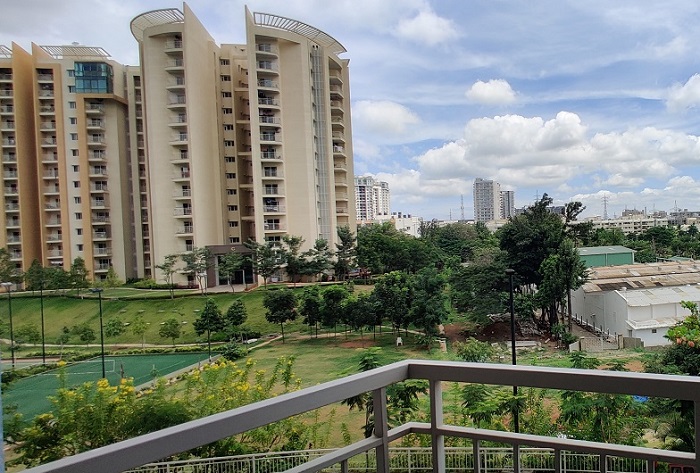The curious case of Mahindra Lifespaces defying the realty index

Last Updated: 13th December 2022 - 09:45 am
The real estate sector has historically flattered to deceive in the capital market. Often ignored by investors due to a perception of poor corporate governance, lack of linear and predictable revenue stack and mired in regulatory webs, the sector tends to have a high beta.
Then again, real estate used to be a regional business with city or region-based developers dominating in their arenas and still do. Some like DLF did try to break out with entry into other markets but those have been at best standalone projects.
Then came a clutch of conglomerates like Godrej, Tata and Mahindra. Some of them ventured into the space to monetise the vast swathes of land banks in different parts of the country owned by their manufacturing factories. But they are now seeking to become national players.
Over the last six years, the sector faced two big regulatory whips with demonetisation taking out a chunk of the huge cash economy and the Real Estate Regulatory Act (RERA) imposing a set of norms. Although RERA’s implementation has been far from perfect, it has sought to bring some sanity in what was a randomly regulated business prone to corruption and black money without much of a recourse for buyers.
The performance of the listed developers including large names like DLF, which still trades below the issue price at its IPO 15 years ago, has not instilled any confidence among the investors.
So, when the BSE Realty Index has actually outperformed the Sensex over the last one year, albeit marginally, we looked at what’s building up!
The Realty Pack
For starters, the BSE Realty Index comprises ten stocks: DLF, Indiabulls Real Estate, Godrej Properties, Sobha, Sunteck, Phoenix, Prestige, Oberoi, Brigade and Macrotech (formerly Lodha).
The realty index has risen around 8% over the last one year. In comparison, the Sensex has been virtually flat in the same period.
While heavyweights like Godrej and DLF have underperformed and some like Indiabulls have actually skid over the last 12 months, many others in the index have actually shot up 20-60% each.
For instance, Brigade Enterprises has seen its share price shoot up over 60% and Prestige Estates’ share price has risen 47% since June 2021.
If we look outside the index, one recent entrant, Shriram Properties, has lost nearly half of its value since its IPO last December.
The outlier
But one stock that has defied gravity is Mahindra Group’s realty arm, Mahindra Lifespaces Developers. The relatively small company has almost doubled in value in the last one year. A bulk of the gain in its share price has happened in the last five-six months.
In fact, Mahindra Lifespaces’ share price has hovered in a small price range for almost a decade before the recent breakout. Its share price has grown at around 13% CAGR between July 2016 and July 2021.
And the company has seen better days with annual revenue in the Rs 550-600 crore levels. The company, like many peers and other businesses, lost its floor after the Covid-19 pandemic hit India. Revenues skid by three-fourth in FY21.
But a clutch of factors could be propelling the company to move forward.
The company appointed a new CEO, who had successfully grown the affordable housing brand Happinest in the previous year itself. An issue of bonus shares in the 2:1 ratio last year helped, too.
The subsequent realisation by investors about its robust launch pipeline and unsold inventory with over Rs 2,500 crore of potential cash flow and captive land bank has got a push of decibels on Dalal Street.
Foundation, fundamentals
Mahindra Lifespaces ended FY22 with strong pre-sales of 1.3 million sq feet, up by a fifth compared to the previous year, valued at over Rs 1,000 crore. Revenue more than doubled compared to the nightmare of FY21.
On the flip side, revenue was still just two-thirds of the pre-pandemic peak but the company posted strong profit, largely due to exceptional fair value gain attributed to partial reversal of impairment loss provision in a Gurgaon project.
The company mitigated input cost push by value engineering, renegotiating procurements and price hikes.
The company had an additional gross development value of Rs 3,800 crore and it has indicated a similar increment this year, almost 50% over its annual guidance.
Mahindra Lifespaces had projected cash flow of Rs 3,180 crore from residential properties including Rs 824 crore from launched projects, Rs 767 crore from future phases yet to be launched and Rs 1,589 crore from projects to be launched.
For integrated cities and industrial clusters (IC & IC), the company went past its pre-pandemic peak to 110.6 acres with average price of Rs 2.7 crore per acre last financial year.
The company is also eyeing acquisition of stressed assets held by asset reconstruction companies and banks. Early this year, it acquired land from parent Mahindra & Mahindra.
A few analysts are projecting the company to double its revenues this year, too, to record the highest-ever topline and in the next year to cross the Rs 1,000 crore revenue mark.
Overall, the company seems to be breaking out. Even though it is yet to join the big league and may not do so in the next two-three years, it appears to be moving in the right direction as it approaches the three-decade mark in 2024 when the Mahindra group entered the real estate business.
Trending on 5paisa
05
 5paisa Research Team
5paisa Research Team
Discover more of what matters to you.
Disclaimer: Investment in securities market are subject to market risks, read all the related documents carefully before investing. For detailed disclaimer please Click here.

